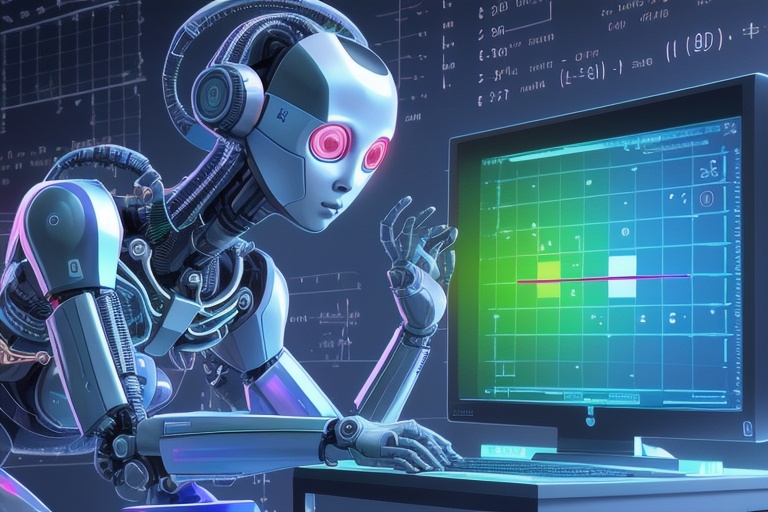Artificial intelligence (AI) has become an indispensable component of the video game industry, playing a critical role in the development of engaging and dynamic gaming experiences. Since the dawn of the industry in the 1950s, AI has been deployed to create responsive, adaptive, and seemingly intelligent behaviors within non-player characters (NPCs), imparting them with a semblance of human-like intelligence. Notably, the AI utilized within video games is distinct from that of academic AI; its primary aim is to enhance the player's experience rather than focus solely on the capabilities of machine learning and decision-making.
Artificial intelligence (AI) has become an indispensable component of the video game industry, playing a critical role in the development of engaging and dynamic gaming experiences. Since the dawn of the industry in the 1950s, AI has been deployed to create responsive, adaptive, and seemingly intelligent behaviors within non-player characters (NPCs), imparting them with a semblance of human-like intelligence. Notably, the AI utilized within video games is distinct from that of academic AI; its primary aim is to enhance the player's experience rather than focus solely on the capabilities of machine learning and decision-making.
Historically, video games rose to prominence during the golden age of arcade games, in the era when AI counterparts captivated players through graduated difficulty levels and distinct movement patterns. The gaming experience was further enriched by in-game events that were triggered by the players' actions. Modern games continue this tradition by employing established techniques such as pathfinding and decision trees, which steer the actions of NPCs, providing players with challenging and unpredictable experiences.
However, the scope of AI in gaming extends beyond the visible aspects of gameplay. Intricate systems like data mining and procedural-content generation are the invisible cogs in the wheel that enhance the gaming ecosystem. The term "game AI" encompasses a wide array of algorithms that draw on elements from various fields, including control theory, robotics, computer graphics, and computer science at large.
It is essential to clarify that what is referred to as "game AI" might not always conform to the stringent definitions of "true AI," which prioritize computer learning and adhere to particular benchmarks. Game AI, more commonly, involves automated computation or a curated collection of responses to a set of particular inputs. Nonetheless, it has been suggested that the advent of video game AI has transformed human interaction with technology. It has introduced a level of versatility that allows for diverse technological device applications beyond their original intention, supposedly allowing AI to develop unique personalities and perform complex tasks on the user's behalf.
It is, however, a subject of debate among AI experts. Some suggest that the term "video game AI" is a marketing term that fosters the belief in the existence of intelligence where there is none, as it essentially uses simple sorting and matching algorithms to fabricate an illusion of intelligent behavior. Yet it cannot be discounted that the interplay between game playing and AI can be traced back to the earliest days of computing.
Historical Context: AI's Inception in Gaming
The interconnection of AI and gaming is longstanding, with early examples such as a computerized version of the game Nim emerging in 1951, which had the capability to consistently surpass highly skilled human players. Additionally, checkers and chess were among the first computer programs ever crafted, placing AI at the very cradle of gaming history.
As the video game industry surged forward, developers introduced AI-controlled movements based on stored patterns for enemy characters. Evolving from the foundational days of Space Invaders, arcade games quickly embraced the notion of AI adversaries. Players encountered rising levels of difficulty, unique movement patterns, and in-game events that responded to their direct input, which were foundational elements in enhancing engagement and challenge.
With the march of technological progress, games like Galaxian and Pac-Man introduced enemy movements of increasing complexity, weaving AI patterns into the core of gameplay. The subsequent integration of AI patterns into genres such as fighting games and tactical action RPGs solidified AI as a primary tool for amping up the user experience.
AI's vital role within video games lies conspicuously in ensuring that NPCs possess behaviors that appear intelligent, which serves to immerse players in a more compelling and lifelike gaming world. While video game AI may diverge from the paths of academic AI, its development has been pivotal for the industry, intent on captivating players and offering them an absorbing escape into alternate realities.
As the trajectory of technological advancement continues its upward climb, so too does the field of AI in gaming, promising evermore groundbreaking and captivating experiences to avid gamers around the globe. In future installments of this series, we will explore the multifaceted landscape of AI in the realm of video games, uncovering the technological marvels that lie within and the potential expansions that beckon us forward.
Information for this article was gathered from the following source.

